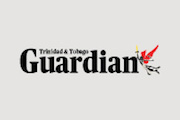media_artricles :: 2013
Dirt Under the Nails
Unique role of athletic trainer
Asha De Freitas-Moseley :: Trinidad Guardian :: 20.09.2013As an athletic trainer, the first responder role falls within our scope of professional duties. It is one of the ways that athletic trainers stand unique from other sports specific professions. While a game is going on and most people would be looking on for entertainment purposes, the certified athletic trainer is working during this time alert to incidences of injury.
Incidences of mild traumatic brain injury (mTBI) are one that can be easily mishandled by untrained persons. This includes, but is not limited to, incidences of concussions or fractures to the skull. Being able to properly assess an athlete who may have sustained such injury is important to limit any long-term effects, particularly with children and adolescents where symptoms can often be prolonged.
In Zurich, November 2012, the 4th International Conference on Concussion in Sport was held. The 2012 Zurich consensus statement that came out of this is designed to build on already existing principles as well as “to develop further conceptual understanding of this problem using a formal consensus-based approach.” It is a reflection of the somewhat complex nature of dealing with head trauma and concussions, which is why, as athletic trainers, we are always conscious of the need to keep up with the latest statements and trends in head injury management.
The third world approach in Trinidad to this aspect of sport is very obvious, the main reason for this being limited resources. Still, there are cost effective ways of addressing some of the basic medical needs, particularly when it comes to high contact sports, with just the presence of a single properly trained medical professional such as an athletic trainer and/or physician.
According to the new 2012 Zurich Consensus statement, a concussion is a subset of traumatic brain injury (TBI) and it is defined as “a complex pathophysiological process affecting the brain, induced by biomechanical forces.” It can be brought on by a direct blow to the head, neck or face region or to the body with force transmissions to the head. The symptoms of a concussion can be immediate or they can evolve over a period of minutes to hours and therein lays the skill of this area of athlete injury management.
As an athletic trainer covering a game, there are a number of factors that are considered when dealing with an athlete who has sustained possible injury to the head. Aside from the obvious one being the general health and well-being of the athlete, there are also the access limitations as dictated by the rules and time-considerations of the sport.
If unsure of how to handle the situation it can lead to error. When fans, referees, coaches and athletes are all watching, in a very time sensitive situation where symptoms of a possible concussion may not have yet started to show, the pressure and stress of the situation can be overwhelming. This is why publications such as these put out by the International Conference on Concussion in Sport are so valuable.
Clinical symptoms following concussions are graded and 80 per cent to 90 per cent of the time, they last a period of seven to ten days (in children and adolescents this may be longer). Symptoms can include any one or more of the following:
a) Physical as with loss of consciousness or amnesia.
b) Behavioral as with an irritable disposition.
c) Cognitive as with delayed reaction time.
d) Sleep disturbance as with insomnia.
Medical assessments include a comprehensive history and a detailed neurological examination which can start with something as manual as employing a “Pocket Concussion Recognition Tool” and assessing cognitive function, gait and balance in the athlete to involving neuropsychologists for more thorough mental assessments.
The “Pocket Concussion Recognition Tool” is a structured checklist system that is endorsed by the Federation Internationale de Football Association (Fifa), International Olympic Commission ( IOC), International Rubgy Board (IRB), and International Ice Hockey Federation (IIHF) all bodies that are very involved in various forms of knowledge transfer on the topic of concussion management and return to play principles.
Rugby interests seems to be increasing in Trinidad while research studies demonstrate that upper limb-to-head contact as with heading contests account for about 50 per cent of concussions in sport. In an effort to remain proactive, our local initiatives need to remain in sync with these realities, increasing awareness for concussions and mTBI on the whole.
Asha De Freitas-Moseley is a certified athletic trainer with the National Athletic Trainers’ Association of the USA. She has over ten years of experience rehabilitating athletes and members of the active population from injury to full play. She can be reached at Pulse Performance Ltd., located at #17 Henry Pierre Street, St James. Tel: 221-2437.

Close Window